We kindly inform you that, as long as the subject affiliation of our 300.000+ articles is in progress, you might get unsufficient or no results on your third level or second level search. In this case, please broaden your search criteria.

The present review deals with the following publications: Bednárová-Gibová, K. (2014) The English Language through the Prism of the Centuries. Prešov: Filozofická fakulta Prešovskej univerzity. 94 pp. Bednárová-Gibová, K. (2018) Selected Chapters in English Lexicology. Part I: Lexical Semantics and Lexicography. Prešov: Vydavateľstvo Prešovskej univerzity. 113 pp.
More...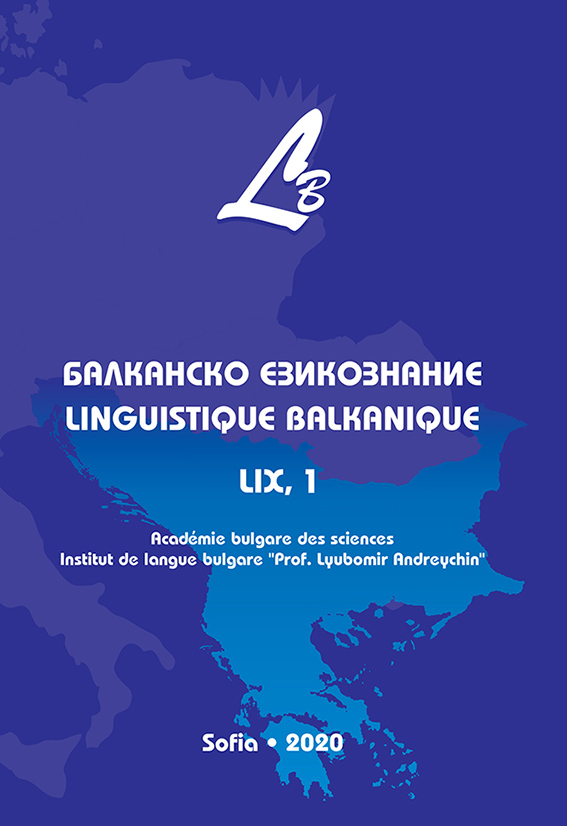
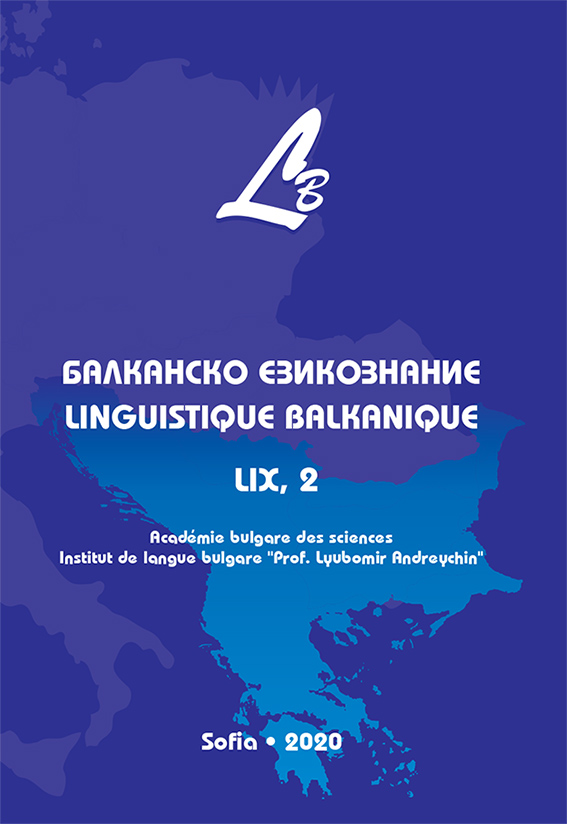
The Moscow school of Balkan linguistics originated in the Institute of Slavic Studies (Russian Academy of Sciences) in the 1960s. It brought together a number of researchers who combined their interest in Balkan synchrony with their deep expertise in diachrony as well as broad competence in linguistics, semiotics, literature, folklore, and ethnology. These researchers’ contributions have been published in periodicals established by the Institute, including “Slavic and Balkan Folklore” (Slavyanskiy i balkanskiy fol’klor), “Slavic and Balkan Linguistics” (Slavyanskoe i balkanskoe jazykoznanie), “Series Balcanica” (Balkanskie chteniya), “Centre of Linguocultural Research “Balcanica”. Proceedings of Round Tables” (Materialy kruglogo stola CLI “Balcanica”), as well as in a number of monographs and collected volumes. Since 2008, the main unit within the Institute organizing the events and publications in the field of Balkan linguistics is the Centre of Linguocultural Research “Balcanica”. The central concept of the school is the so-called “mediate language” (“jazyk-posrednik”), an abstract system of symbols that 1) facilitates the most efficient description of any given Balkan language within the framework of all other Balkan languages and 2) provides a set of cost-effective algorithms to transform sentences (or texts) of a Balkan language into any other Balkan language. In the first part of this study the authors analyze the main publications and conferences within the framework of the Moscow school of Balkan linguistics during the last 60 years, focusing mostly on the problems of grammar typology and highlighting the current trends in the field. We specifically dwell upon contributions in the field of verbal and nominal systems of the Balkan languages, functional words, and lexicon, as well as outline the current trends that define the development of Balkan studies in the first twenty years of the 21st century.
More...


This article sets out to outline the evolution of the Translation Studies in Bulgaria from 1970 till the beginning of the 21st century. It aims to provide a brief overview of some pioneering articles, the studies that marked the development of translation theory from 1970 to 1990 and some works from the post-totalitarian period. In 1976 the Publishing House Narodna kultura lays the foundation stone for Translation studies, creating the collection “The Art of Translation”. From the 1970s, the Theory and Practice of Translation are included in the courses offered by the Faculty of Western Languages of Sofia University. If the key word defining the translating activity in Bulgaria from the Second World War to the 1990s is confinement, the one that qualifies its state at the beginning of the 21st century is openness. Very controlled in the years 1970 – 1990, the translatological reflection frees itself from the ideological pressure at the turn of the 20st and 21st centuries.
More...
The article examines the evolvement of the Bulgarian word kurort in historical terms. The first part discusses the practices of using the healing power of nature from ancient times to the present day. Special attention is paid to balneology in Bulgaria as evidenced by numerous settlements named Banya, lit. ‘bath’. Next, an analysis is made of the word kurort and its dissimilarity from the corresponding English and French terms. The emergence of the concept of Kurort in the German language is associated with the general development of medicine from the XIV century onwards, when the medical terminology changed.
More...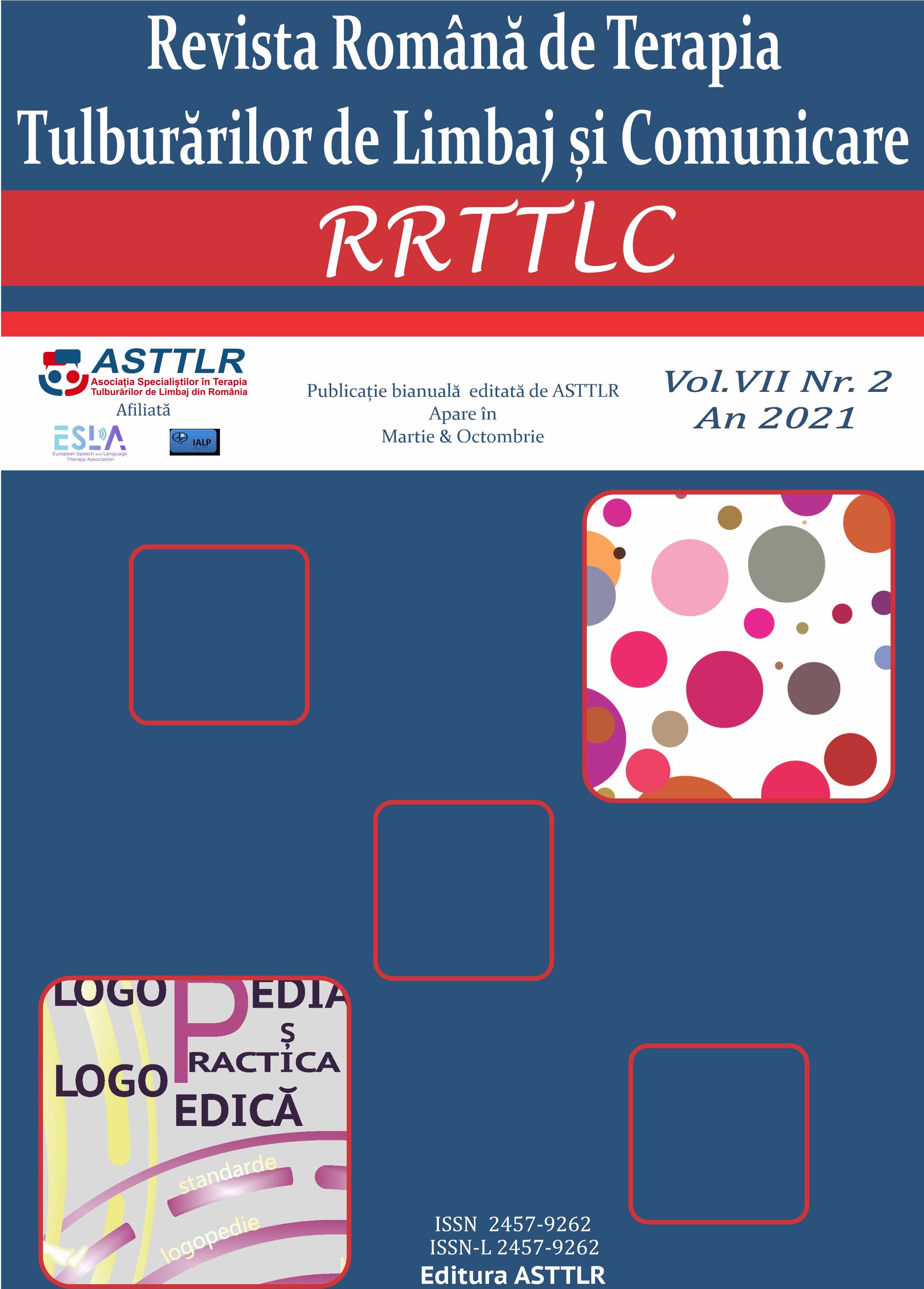
The purpose of this article is to highlight the importance of using three functional measures: Auditory Developmental Scale (0-6 years), Caregiver Intake Interview, and Infant-Directed Speech Checklist in SLT. In the first part of this article, the authors discuss the purpose and advantages of using these instruments in SLT practice. In the last part of this article, the Caregiver Intake Interview and the Infant-Directed Speech Checklist are presented in two languages, English and Romanian.
More...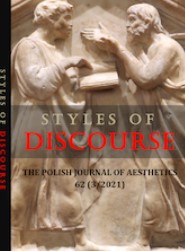
This article introduces cross-cultural communication and linguistic cross-fertilization by exploring the fascinating and multifaceted Yiddish language and its survival in Israeli, the result of the fin-de-siècle Hebrew revival. Yiddish is a 1,000-year-old Germanic language with Latin, Hebrew, and Aramaic substrates, with most dialects having been influenced by Slavonic languages. Yiddish is characterized by a unique style that embeds psycho-ostensive expressions throughout its discourse.
More...
A new approach to the analysis of eighteenth century Bulgarian texts is proposed. They are classified into four types - a strongly classicized, an intermediate, a moderately classicized and a demotic one - which differ in the degree and the character of their classicization on the phonetic, morphological and syntactic level. With all the four written-language styles the vocabulary combines a good deal of the centuries-long tradition (abstract words, names for religious concepts, natural-science and philosophical terms) with innovative lexical items, as it is in present-day Bulgarian, and the spelling is traditional. The Greek moderate Katharevoussa (as a means of making a linguistically modern text look classical-like) is the typological model for the moderately classicized eighteenth century Bulgarian written style, as the Greek Dhimotiki is for the demotic one. Two varieties of the classical written language provide linguistic samples for the eighteenth century Bulgarian scribe: the South Slavic (Serbo-Bulgarian) bezjusov one (without letters for the Old Bulgarian nasal vowels) and the East Slavic Church Slavonic one. The language of Paisij Hilendarski is of the intermediate strongly-to-moderately classicized type with a mixed traditional Serbo-Bulgarian and East Slavic phonetics and orthography and does not contain dialectal-vernacular phonetic features as some specialists in the history of Written Bulgarian claim.
More...
The last two years saw a dramatic increase in the use of digital classrooms due to the new pandemic realities. Internet platforms and social networks offer teachers many options for interacting with their students and colleagues. Online communication differs from face-to-face communication in many aspects and for linguadidactic purposes should be reconsidered from a sociolinguistic point of view. The aim of the study is to explore sociolinguistic aspects of teachers’ nature in online intercultural communication. The study relies on a questionnaire and interviews to collect data about students’ level of sociolinguistic awareness, their ideas about professional online interaction, and their views on sociolinguistic difficulties. The research provides a comparative analysis of the sociolinguistic competence status in Russian and European methodology. The paper introduces the list of internal and external features that influence interlocutors’ sociolinguistic behavior during intercultural communication online. The results suggest that there are a lot of digital factors that determine the communication outcome. The term “sociolinguistic credo” and its definition are presented. It is admitted that external and internal peculiarities should be taken into account in order to train future foreign language teachers effectively. There should be equality of cultures, especially on the Internet where it is easy to lose all cultures behind avatars.
More...
Learner-centered approaches to learning and teaching alongside education for sustainable development (ESD) emphasize the education of engaged and active global citizens (UNESCO, 2017). The development of students’ reflective skills and metacognitive strategies is the center of this study that aims at investigating the learner language of a group of adult learners at an upper-intermediate level. It sets out to investigate to what extent learners are able to notice and correct their errors after reflecting on their spoken production. Moreover, it seeks to examine the students’ perception of their self-reflection and their attitude towards using speaking tasks for grammar learning. Comparative error analysis showed that the participants were able to amend 34.6% of total errors. These were made mainly in noun phrases (30% of total errors in Task 1 and 31% in Task 3) and verb phrases (40% of total errors in both tasks). Although no general conclusions could be drawn, the results seem to suggest that after critical, evidence-based reflection, the participants were able to notice and correct some errors, namely, in determination and the use of the past simple. The results of the survey analysis showed that all participants reported on an improved awareness of the gaps in their interlanguage, and all of them considered speaking tasks beneficial to grammar development. The study indicates that carefully planned, repeated speaking tasks might be helpful for learners’ language processing, consolidation of their grammatical knowledge and the improvement of their reflection skills and metacognitive strategies.
More...

This article deals with the forms of Christian names used by Marispeaking people in the Middle Volga region. It provides a general picture of the phonetic modifications made in Mari versions of Russian Christian names when they were adopted. At the beginning of article information is given on Russian-Mari contacts and the development of the Orthodox religion on Mari territory. The author reveals phonetic mechanisms of adaptation, which enabled Christian names to be integrated into the onomastic system of the Mari language. The data of adopted personal names used in analysis is not exhaustive; it does, however, allow one to show certain phonetic inflections in adopted names. Part of the phonetic modifications are systematic and some appear inconsistent while even others can be taken as individual cases.
More...
The present article is focused on the similarities existing between some of the characters of the Caucasian Albanian script and some of the graphemes of the so called “runic inscriptions” from the 10th century Bulgarian rock monasteries from Murfatlar and Krepcha. The similarities in question do not only concern the shape of some of the “runic graphemes”. Obvious parallels between the designations of the Caucasian Albanian characters and the “ordinal numerals” from the Proto-Bulgarian calendar are discussed, too. After analyzing these similarities and making a critical discussion on the different attempts at etymologizations of “the ordinal numerals” of the calendar on the ground of the Turkic -r/-l languages, I conclude that the numerals reflect designations of letters from an unknown writing system created for some of the clan languages of the Proto-Bulgarians and partly or entirely based on Caucasian and Semitic written traditions.
More...
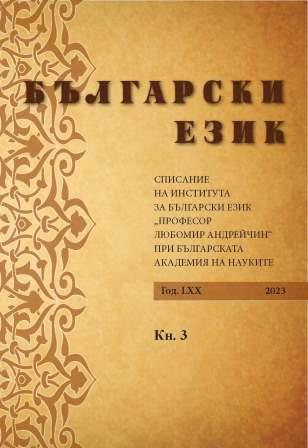
The collection covers a broad range of topics reflecting Prof. Vladko Murdarov’s interests in linguistics and translation. It is divided into two main sections titled Friends and Colleagues. The first one features contributions by people involved in academia or the theatrical community, while the latter includes 38 thematically organised scientific articles and one review.
More...![Review of the linguistic materials contained in volume 2, section 2, of the two-volume Makedoniya. Istoriya i kultura ot drevnostta do dnes [Macedonia. History and Culture from Ancient Times to the Present] (2023); Ezikoznanie [Linguistics], ed. Geor](/api/image/getissuecoverimage?id=picture_2024_82588.jpg)
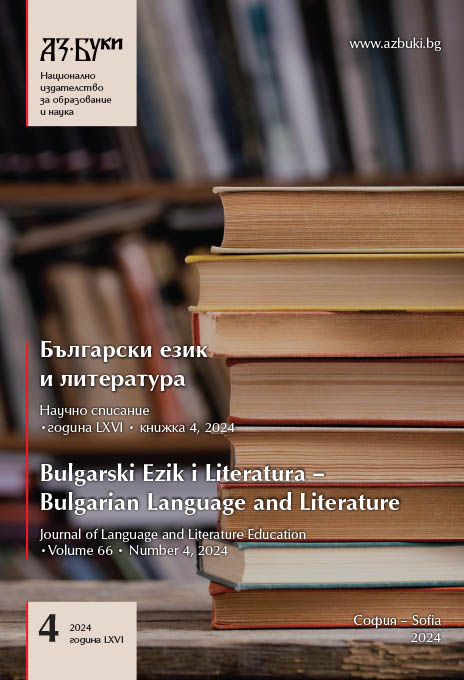
The study examines the problems of rhythm as a non-linguistic and linguistic phenomenon, as well as the similarities and differences between rhythmic organization in poetry and in speech, the number and nature of rhythmic units, the classification of languages according to their rhythmic organization, and the role of various prosodic features in the rhythmization of speech. Moreover, special attention is paid to the nature of rhythm in relation to its participation in the temporal organization of speech and to the specificity of the rhythmic systém of the Bulgarian language. For this purpose, the theoretical propositions on the physiological, perceptual and linguistic conditioning of speech rhythm in relation to speech production and speech perception are presented in detail. At the end of the article on the basis of experimental data from a number of studies that have examined the rhythmic organization of Bulgarian spoken prose (colloquial language), both literary and dialectal, a number of important conclusions are made for the Bulgarian language on the discussed issues.
More...